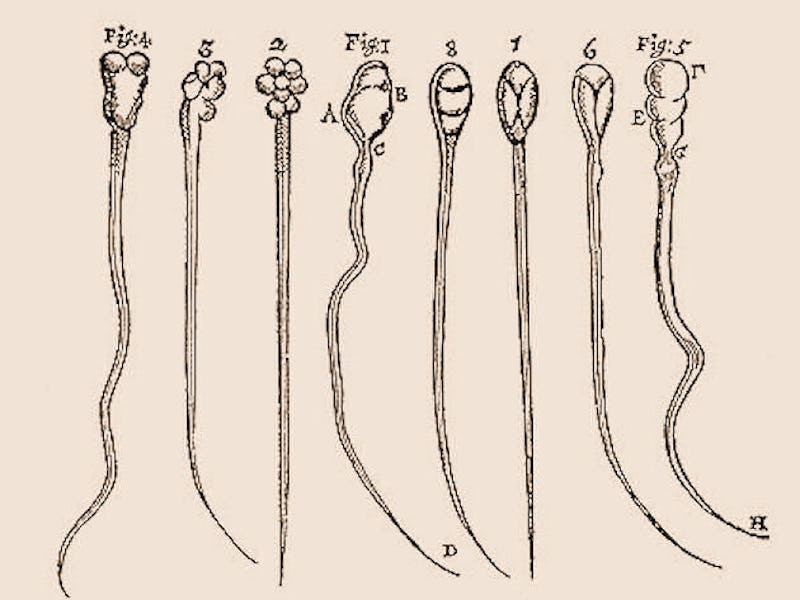Changes in Sperm RNA May Shape Future Generations, Scientists Warn
Dad's lifestyle is affecting the kids more than we thought.

While the rest of the world debates the ethics of designer babies, a team at the University of Massachusetts Medical School (UMass) have shown that we might not need CRISPR to change the genes of future generations. Their paper, released this week in the journal Developmental Cell, shows that things like diet and stress might affect some crucial genetic components of sperm, and that these tiny changes have real effects on how babies develop.
The same way rockets bound for outer space contain “payloads” like satellites, or astronauts who battle giant balls of urine, sperm are also like little rockets containing their own cargo: “small RNAs.” This study found that not only do RNA sequences play a crucial role in how genes get expressed early on in human development, but they can also be radically changed by the lifestyles of fathers. Things like diet, and in particular, stress can change the makeup of this crucial RNA cargo and lead to observable changes in offspring, says researcher Colin Conine, Ph.D., at UMass Medical School’s Rando Lab.
Pups developed from embryos injected with different types of RNA
“Labs all over the world have been able to link changes in dad’s lifestyle to changes in RNA in the sperm, and then that leads to phenotypes in the offspring,” Conine tells Inverse. “Our study was one of the first to really look at how changes small RNAs affect early development. We wanted to ask, what are the first steps that lead to these phenotypes down the road?”
To do this, the researchers devised an experiment where they tested how sperm from different areas of mouse testicles impacted gene expression in some petri-dish embryos. Sperm from the caput (Latin for “head”), or top of the testicle, actually has different types of RNA that sperm collected from the cauda (Latin for “tail”), or the bottom of the testicle, where it waits patiently in a reservoir to be ejaculated. Oddly, this actually worked as a good way to test how lifestyle changes might actually change sperm’s interaction with embryos because it allowed the researchers to investigate how differences in RNA (like those resulting from diet or stress) might impact how embryos developed.
Sperm from different parts of testicles actually have different RNA profiles
Injecting these different types of sperm into the embryos produced some strange results. When they injected the caput sperm into the embryos, they tended to overexpress certain genes and in some, eventually fail, something the team referred to as a “lethal phenotype.” But even more notably, they were able to prove that RNAs in sperm are important for embryo development by showing a reverse effect. Conine says they were able to save some of these doomed embryos by injecting them with RNAs from the testicle’s cauda portion, which contained healthy, mature sperm.
“It seems like the small RNAs in the sperm are able to regulate gene expression in the embryo,” he says. “But what’s pretty clear is we are able to rescue those changes in gene expression by giving back the RNAs that we know are actually normally gained during sperm maturation.”
These results show a type of cause and effect, although Conine is still unsure of how this chain of command actually unfolds in detail. Aspects of life, like stress or diet, change the levels of specific types of RNAs in sperm. Those RNAs are then delivered by sperm to the embryo where, this study has shown, it can lead to some strange patterns of gene expression in the future. The important takeaway is that changes in dad’s RNA are more than likely to lead to some kind of change in the embryo.
At this point we don’t actually know whether these new patterns of gene expression might necessarily be bad, Conine says, but they’ll definitely different. It may take years before we really understand what the real changes will be in humans borne of embryos with strange RNA sequences. But studies like this are a start.